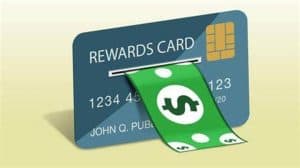Amex Gold Vs Chase Sapphire Preferred: How to Choose a Reward Card
You spend money every day on necessary and some less-needed things. It may seem counterintuitive, but there is a way to actually “earn” while spending. That is exactly the point of reward cards since they allow you to get a bonus for every dollar spent. And when you already use this financial tool for daily purchases, why not?

There are many cards from which you can choose. For example, Amex Gold vs Chase Sapphire preferred by most users are quite popular options, each with its pros and cons. Of course, there are many other reward cards from different issuers, and we give you some helpful tips on finding the best one for your needs.
Which Reward Program Do You Want?
In general, reward cards fall into three categories, depending on what they give as a “prize” for your spending. Most of these programs work by the cash-back model, which means that every time you use a card, it gives you a certain return. It can be one to two percent of the amount (you get a dollar or two for every $100 spent). Some issuers give even more points to responsible users who pay off their balances in full every month.
Points and miles are a bit more complex to calculate. Depending on the reward program, you get a certain number of these incentives for the amount spent. For example, for the already mentioned amount of $100, you will get double or triple points or miles (keep in mind these are fly miles you can turn into cash you will be using for travel). Depending on how much one of them is worth, you can calculate how much you earn.
Different cards have different calculations of rewards. Some give you flat rates, meaning you earn the same number of points for every purchase. On the other hand, some cards provide special incentives for specific consumer categories. For example, they give higher reward rates for eating out or using them at gas stations. The points you earn in these ways can most often be used for the same purpose, although there are also rewards you can put into real dollars.

Which Fees You Pay
Credit cards allow you to dispose of money you currently do not have, like a short-term loan. More on their benefits see here. And just like any loan, it comes with certain costs. Simply, you will be charged for this service. In general, issuers can set different fees, but the cost specification is more or less the same for every issuer.
For starters, you must pay an annual fee ranging from several tens to several hundred dollars. It is a critical factor when choosing a reward card because if you do not earn enough points or cash-back to cover at least this fee, you will not enjoy the benefits of these tools.
Some cards may have redemption fees, which should be clearly stated in your contract. Just make sure to read the fine print to avoid surprises when withdrawing less cash than you thought you would have.
Then, there are interest and balance transfer fees, which you face when you roll your balance as long as you can by paying just a minimum. If you think you will not be able to handle these costs, opt for 0% APR cards. They give you a certain period when you do not have to pay interest but still enjoy the benefits of collecting points, usually a year.
Bonuses
Card issuers offer various incentives to attract customers, and this is something you should take advantage of. For example, many reward programs give bonuses that double or triple during a certain introductory period of use. Or they offer fixed amounts of cash-back for a pre-set amount you spend within a certain period (for example, you get $100 cash-back or 10,000 miles if you spend $1,000 in three months). Another perk you might enjoy is waiving an annual fee for the first year.
Reward Redeeming
You can receive your reward at the end of the accounting period (usually one year). All those spendings brought you cash, points, or miles you can use for purposes suggested by the issuer or simply turn them into dollars and spend however you want.
On the following page, see how fly mile rewards work:
https://www.fool.com/the-ascent/credit-cards/how-credit-card-miles-work/
If you opt for the latter, you can deposit that money into your bank account or get it as a check. You can even use it to pay off your card balance. In the case of points, you can also turn them into dollars, use them for purchases, or turn them into gift cards.
Credit cards are a great tool to help you pay with ease and build your credit, provided you use them responsibly. Besides, they give additional incentives such as various rewards you can exchange for cash or use for something you need – dining out, trips, daily shopping, etc. In any case, if you use plastic money wisely, you can enjoy many bounties.

